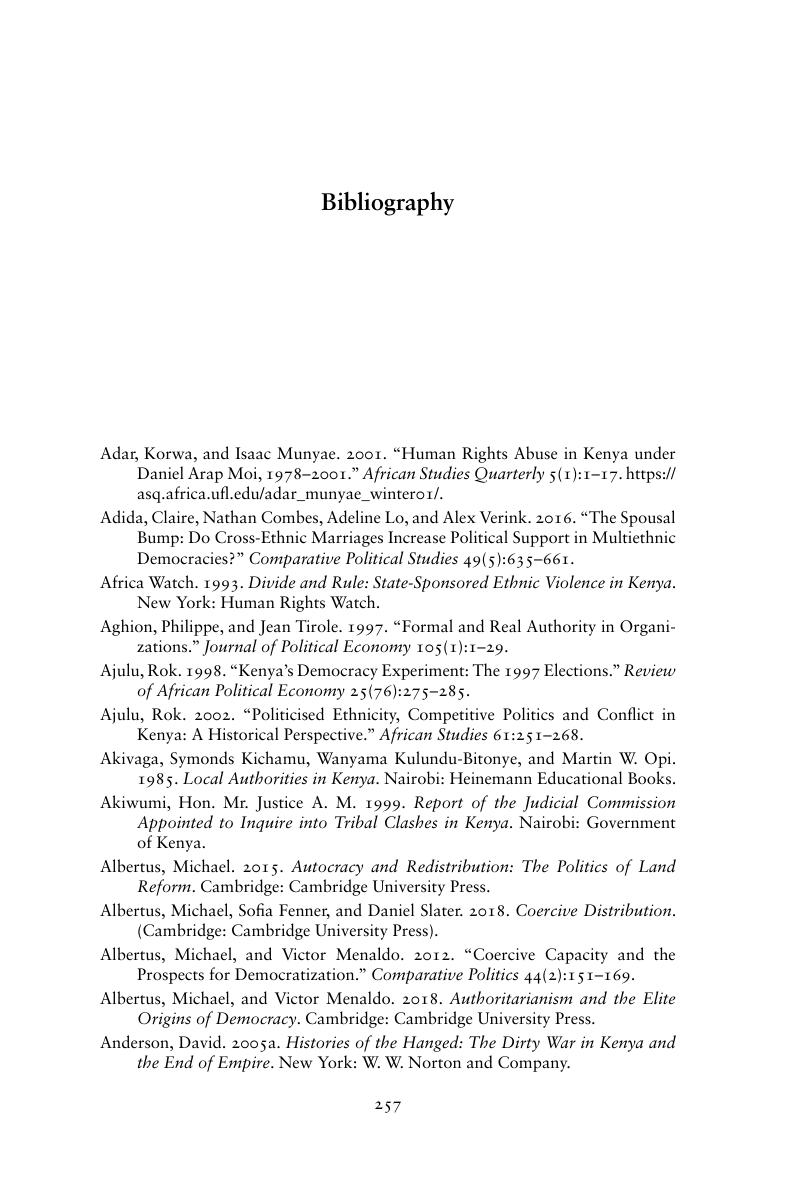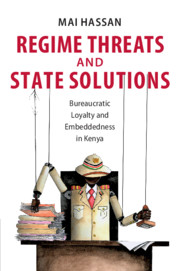Book contents
- Frontmatter
- Dedication
- Contents
- List of Figures
- List of Tables
- Preface
- Acknowledgements
- 1 Bringing Bureaucrats In
- 2 Managing the State
- 3 The Origins of the Kenyan State
- 4 Elite Incorporation and the Diversity of the State
- 5 The Provincial Administration under President Kenyatta
- 6 The Provincial Administration during President Moi’s Autocratic Years
- 7 Moi, the Provincial Administration, and Multiparty Elections
- 8 Kibaki and the Provincial Administration
- 9 Conclusion
- Bibliography
- Index
- Series page
- References
Bibliography
Published online by Cambridge University Press: 31 March 2020
- Frontmatter
- Dedication
- Contents
- List of Figures
- List of Tables
- Preface
- Acknowledgements
- 1 Bringing Bureaucrats In
- 2 Managing the State
- 3 The Origins of the Kenyan State
- 4 Elite Incorporation and the Diversity of the State
- 5 The Provincial Administration under President Kenyatta
- 6 The Provincial Administration during President Moi’s Autocratic Years
- 7 Moi, the Provincial Administration, and Multiparty Elections
- 8 Kibaki and the Provincial Administration
- 9 Conclusion
- Bibliography
- Index
- Series page
- References
Summary

- Type
- Chapter
- Information
- Regime Threats and State SolutionsBureaucratic Loyalty and Embeddedness in Kenya, pp. 257 - 276Publisher: Cambridge University PressPrint publication year: 2020



